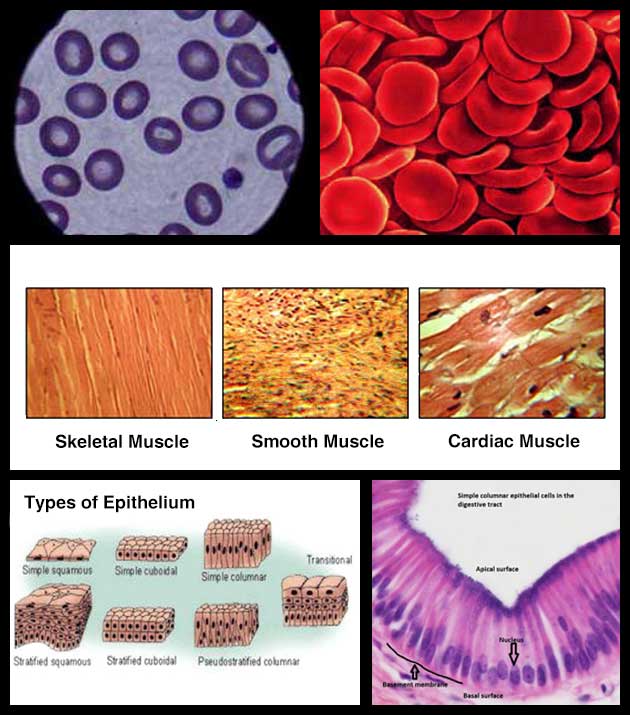

Red blood cells are specialized cells found in animals that transport oxygen throughout the body. Since transport is their primary function, they do not need a nucleus. The lack of a nucleus leaves more space in the cell for hemoglobin, the protein that binds to oxygen. This also gives red blood cells their unique shape. Unlike most cells, red blood cells do not reproduce through mitosis; they are created in the marrow found in the bones.
Muscle cells are long, fibrous cells that have the ability to contract. They allow animals to move and allow their organs to function in circulation as well as digestion. Muscle cells are made up of two special types of proteins called actin and myosin. Because of the actin and myosin, muscle strands are able to slide past each other. This sliding action allows the muscle cell to contract. Since a lot of energy is needed in your muscle cells, you will find more mitochondria than is found in most cells.
Epithelial cells are the cells that line the outside, as well as the inside, of your body. They are the cells that make up your skin. Skin epithelium is actually located just below the surface of your skin. They are responsible for making new cells. They also produce the pigment melanin, which protects us from the sun’s harmful rays. Epithelium also lines the inside of your digestive tract as well as your respiratory system. They come in many shapes and sizes depending on their function.